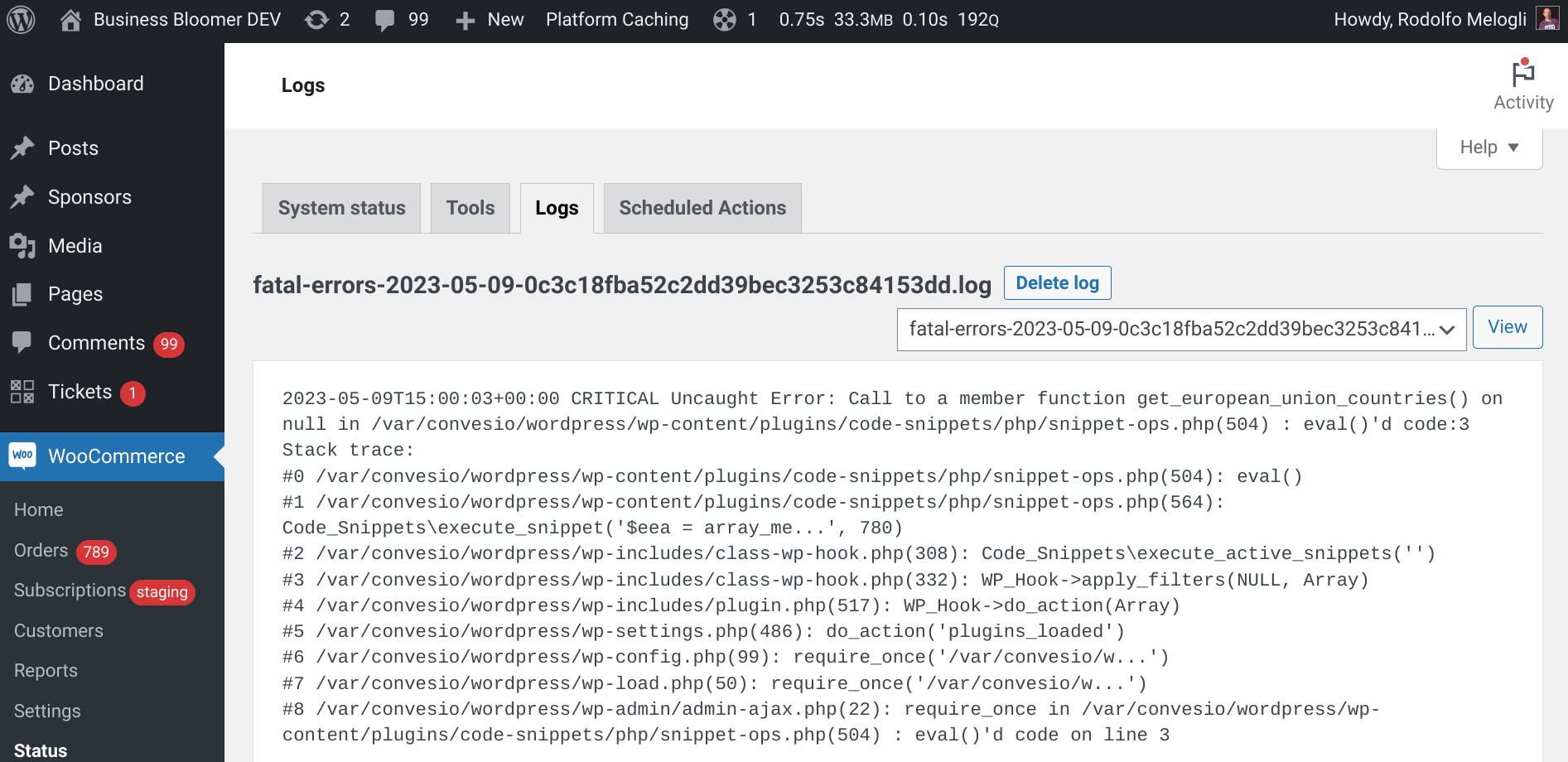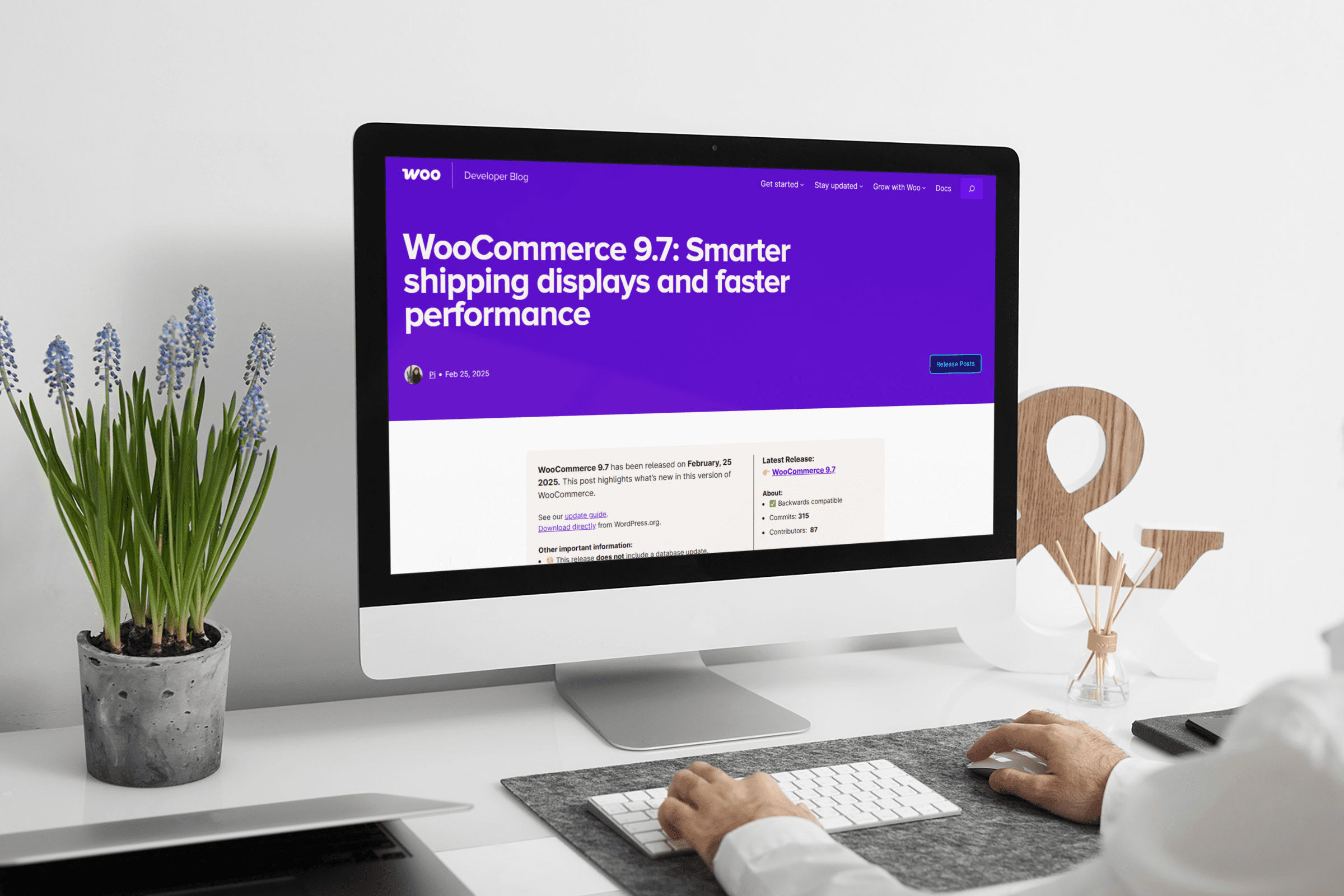WooCommerce May Meltdown: The Critical Error Crashing WordPress Sites and How We Can Help
What’s Happening With WooCommerce?
A recent bug in WooCommerce is leading to fatal errors on WordPress sites, resulting in complete site outages. The problem appears to stem from conflicts between WooCommerce and other plugins or themes, particularly following recent updates. Users have reported that activating or updating WooCommerce triggers critical errors, rendering their websites inaccessible. Don’t worry though, we can help!
Over the last few days, WooCommerce site owners have been grappling with one such unpleasant surprise: a critical bug that causes WordPress sites to crash, showing only the dreaded “There has been a critical error on this website” message.
If you run an online store powered by WordPress and WooCommerce, this latest bug may have already knocked on your digital door. If not, it’s a strong reminder of just how vital it is to have robust, proactive website support in place.
The Bug That Brought WooCommerce Stores to Their Knees
This issue was first widely reported on 5th May 2025 by Search Engine Journal, highlighting how a change in the WooCommerce plugin—combined with recent WordPress updates—triggered widespread failures. The bug is currently causing sites to become completely inaccessible after routine updates to WooCommerce, a situation that is especially devastating for ecommerce businesses reliant on constant uptime.
Users across various WordPress forums have been voicing frustration and confusion, as sites that were functioning perfectly a moment ago now show a blank screen or a message informing them of a critical error. Unlike minor glitches, this isn’t something that can be ignored. It’s a full-scale site crash that affects everything from customer checkout to backend access.
Some reports suggest that this problem stems from an internal conflict triggered by WooCommerce’s dependency on other scripts and functions within WordPress. In other words, a specific part of the WooCommerce codebase is colliding with how WordPress processes site functions—causing everything to grind to a halt.
The Immediate Impact on Businesses
For online shops and service providers, this isn’t just a technical hiccup—it’s a potential revenue killer. Imagine being mid-campaign, directing paid traffic to a landing page, only for visitors to be met with an error screen. Or worse, having a customer try to place an order and being locked out of your checkout system entirely.
What makes this issue even more complex is that it doesn’t have a one-size-fits-all fix. Some users found their sites crashing after simply updating WooCommerce to the latest version. Others saw failures after updating WordPress core. For some, specific combinations of plugins and custom themes seem to be causing the conflict. It’s a messy situation with no easy answers.
Don’t Panic — But Don’t Wait
We want to be crystal clear here: if your WooCommerce site is working fine now, that doesn’t mean you’re in the clear. This bug is tied to the latest wave of updates and has the potential to be triggered by future changes to your site. That could be something as simple as auto-updating a plugin or changing your WordPress theme.
That’s why now is the time to get ahead of it. Proactive monitoring, update testing, and compatibility checks are essential to keeping your site online and revenue flowing. Waiting until something breaks could mean hours—or even days—of downtime while the issue is diagnosed and resolved.
And for those of you already experiencing the dreaded “critical error” screen, know this: there is a way back, and we’re here to help you get there.

Why This Bug Is So Hard to Fix Alone
When a site crashes in this way, many business owners head straight to Google for DIY fixes. But this particular bug is tricky. In some cases, attempts to resolve it without a full understanding of the site’s configuration have made things worse—removing essential functions, breaking payment gateways, or losing data in the process.
Recovering from this kind of error usually involves accessing server files directly, carefully analysing log files, and in some cases, rolling back versions of plugins or the WordPress core itself. Not exactly the kind of task you want to be taking on when your site is already offline and customers are losing trust.
At O’Brien Media, we’ve helped clients through issues like this before, and we’re actively monitoring this bug and its impact across the WordPress and WooCommerce ecosystems. Whether your site is already down or you want to protect it from future problems, we’ve got the tools, the experience, and the know-how to help.
What We Do to Keep Your Site Running
We understand that your website isn’t just a marketing tool—it’s the heart of your business. Our support services are designed to do more than just react when things go wrong. We take a proactive approach to prevent problems before they ever affect your visitors.
Our expert team works daily with WordPress, WooCommerce, and a huge range of plugins and themes. We know what causes these bugs, how to safely resolve them, and how to put systems in place to prevent similar issues in the future. We’re also on hand to help recover your website quickly and minimise disruption to your business if something does go wrong.
And we do all this without requiring you to lift a finger. From monitoring and maintenance to real-time bug fixing and version control, we handle it so you can focus on your customers and your business.
Need Help Now?
If your website is already displaying a “Critical Error” message, or if you want to make sure it never does, we’re here for you.
We offer a fully managed WordPress and WooCommerce support service that includes:
-
24/7 website uptime monitoring
-
Proactive plugin and theme compatibility checks
-
Safe update testing and rollouts
-
Emergency recovery from bugs and crashes
-
Ongoing maintenance and security updates
You can learn more about our support services here: Website Support for WordPress and WooCommerce
This bug is a serious issue, but with the right team behind you, it doesn’t have to be a business-breaking one. Whether you need us to bring your site back online or just want peace of mind going forward, we’re only a click or a call away.
If you’re experiencing issues with your WooCommerce site—or want to make sure you’re protected—get in touch with us today. At O’Brien Media, we’re passionate about keeping your website stable, secure, and stress-free.
Want us to handle it for you? Get website support now →


